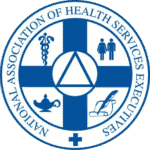Here we go again. The Centers for Medicare & Medicaid Services (CMS) recently released the 2021 physician fee schedule final ruling. Within the confines of the rule, we some big changes in how we provision remote patient monitoring (RPM) in our facilities. This blog will help keep you compliant with some of the RPM regulatory changes this year.
RPM 2021 Final Rule
If your organization has an RPM program or is thinking about adding one to your facility, here are some of the new rules that will affect the design of your service. While this isn’t a complete list, these are some of the most significant changes to review.
- The new definition of CPT 99457 and 99458. CMS declared a new definition for these codes, calling them “interactive communication” defined as two-way real-time synchronous interactions enhanced by video or data. Initially, this caused concern that all of the time under these codes should be interactive, but a January correction document that says just some of the time for each code is fine. (Look for future rulings to tighten this.)
- Clarification on device requirements for CPT 99454 suggests that devices in RPM programs must meet the definitions under the FDA’s Food, Drug, and Cosmetic Act. The definitions say these devices must electronically collect patient data, not allow them to self-report.
- CMS says they will reimplement the requirement that RPM can only be used and billed for established patients after the COVID-19 health emergency. There was significant industry pushback on this.
- Patient consent is to be received for RPM services when services are provided, not in advance.
- Auxiliaries can furnish CPT 99453 and 99454 under a doctor’s supervision. Originally, the auxiliary personnel was defined as an employee, leased employee, independent contractor, or a legal entity contracted with the physician.
- Only physicians and non-physician practitioners eligible to offer E&M services are allowed to bill for RPM under CPT 99453, 99454, 99091, and 99458. Only a single practitioner can bill for 99453 and 99454 during a 30-day timeframe.
- Coverage for RPM now includes chronic and acute conditions.
- The existing requirement that 16 days of data for each 30-day window can be collected before billing CPT 99453 and 99454. There was industry pushback to lower this to six days, to no avail.
- CMS issued a new fact sheet to clarify the waiver under COVID of the 16-day measurement rule for 99454 that allowed only two measurement days with the patient has COVID-19. It appears that the 16-day default is the standard with the two-day rule applying only with patients that have or are suspected to have COVID-19.
- It now appears that providers can bill for “complex RPM management” both the old provider-specific CPT 99091 for RPM simultaneous to 99457 (the code from 2019).
Given that RPM is a relatively new offering, it’s understandable that there are shifts in billing for this service. As RPM stabilizes as a go-to service, new rules and revisions are expected.
UHC Solutions offers community healthcare providers a partnership to help them meet their hiring goals. Talk with our team if you’re searching for leadership or providers for your healthcare organization. We can help.





